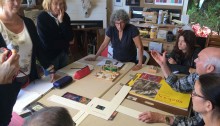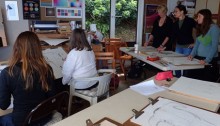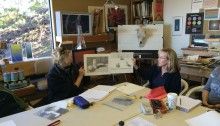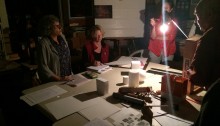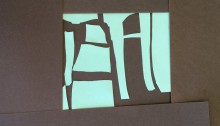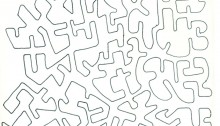Advanced Drawing and Composition 2016 week 5
The fifth session of the Advanced Drawing and Composition class for Winter 2016 was held on Wednesday, February 10. We spent most of the class on a thorough critique of the homework, using worksheets and handouts to guide our thoughts, and discussed the importance of having relationships between all components of a piece. We were made aware of the differences between a value statement vs. a judgment, and Dick talked about why, as an artist, it is so important to identify your theme before beginning your work. We received a new homework assignment, and wrapped up our session with a fun game that conveyed the difficulty in communicating an accurate visual message.

